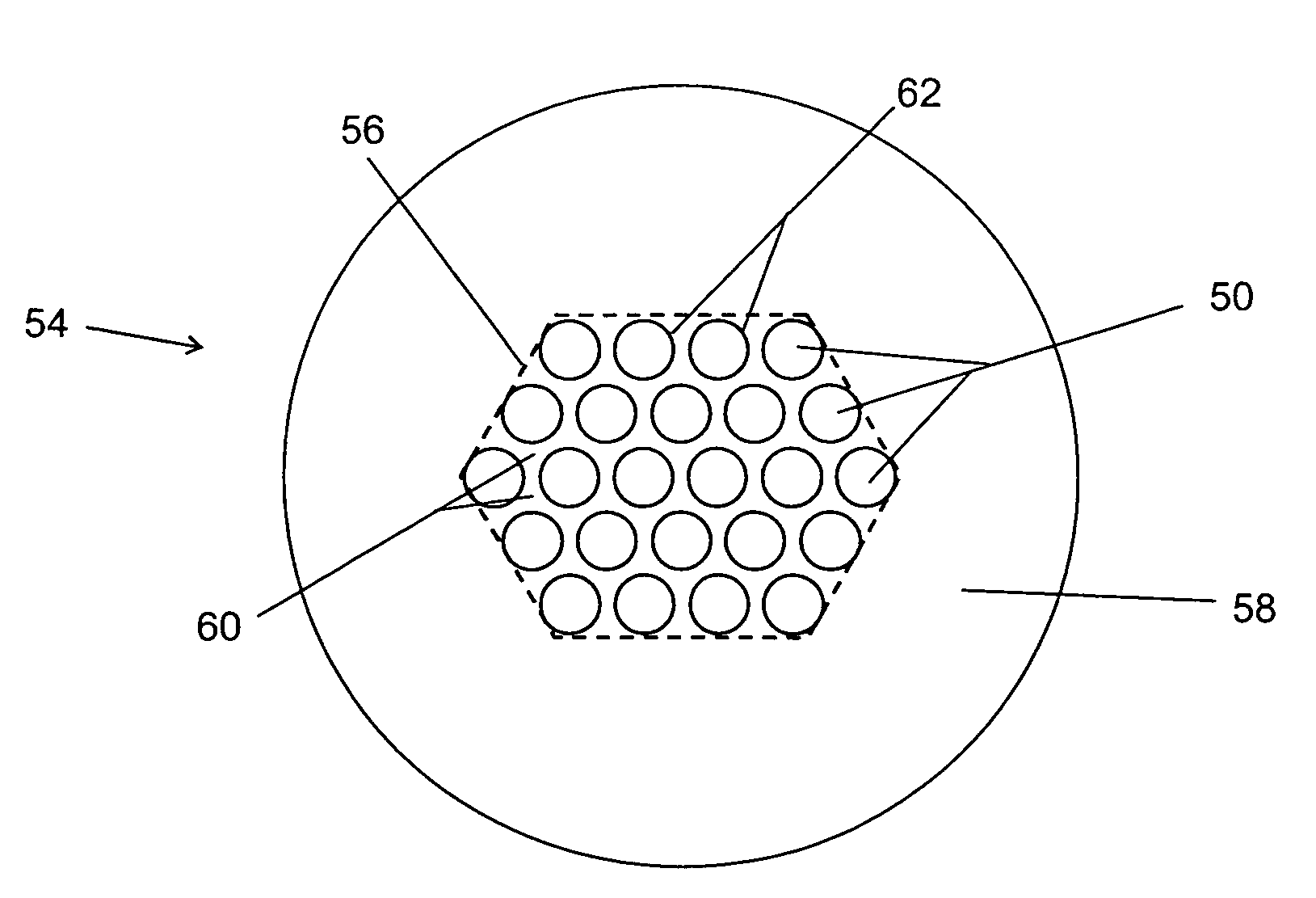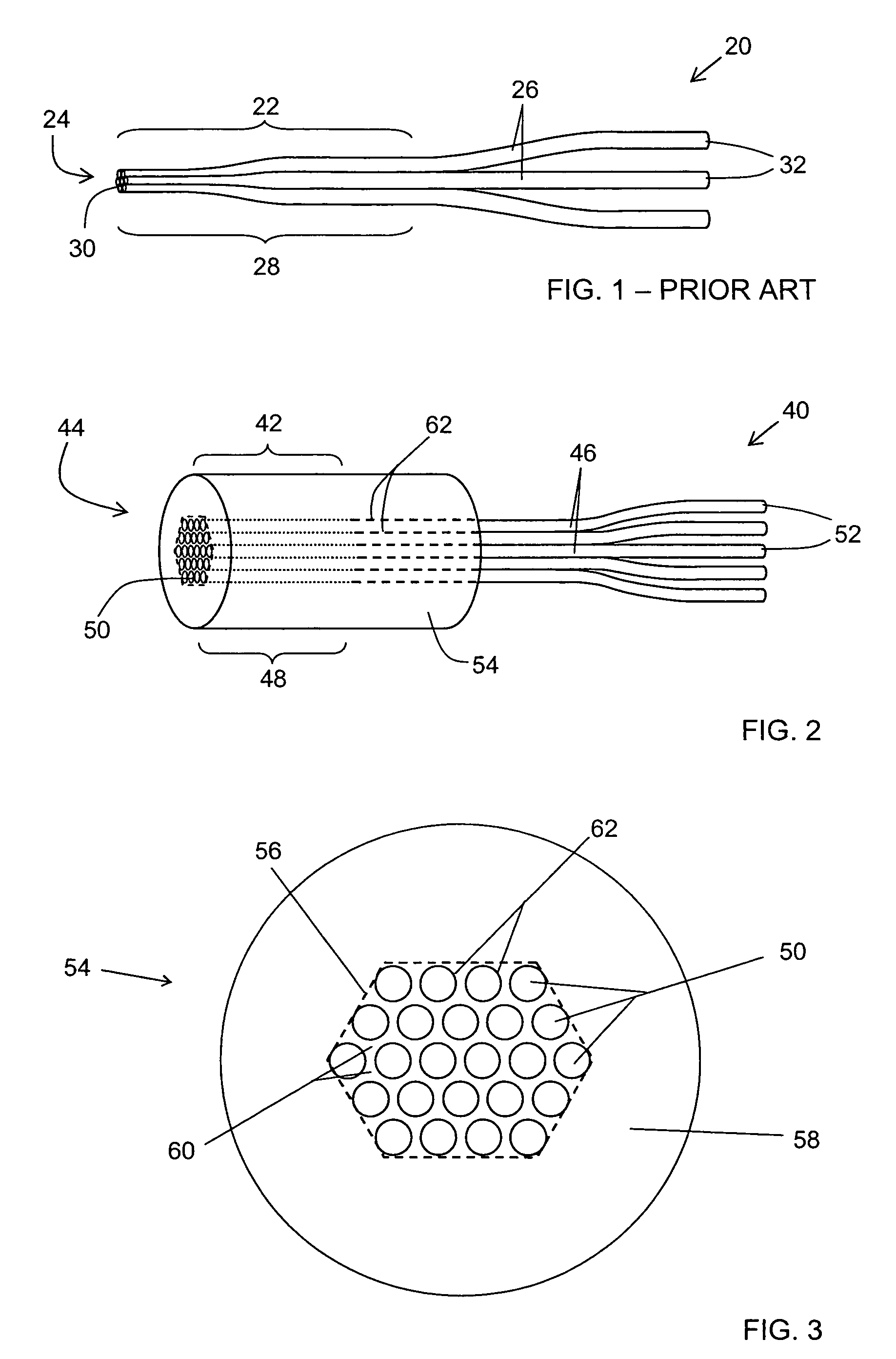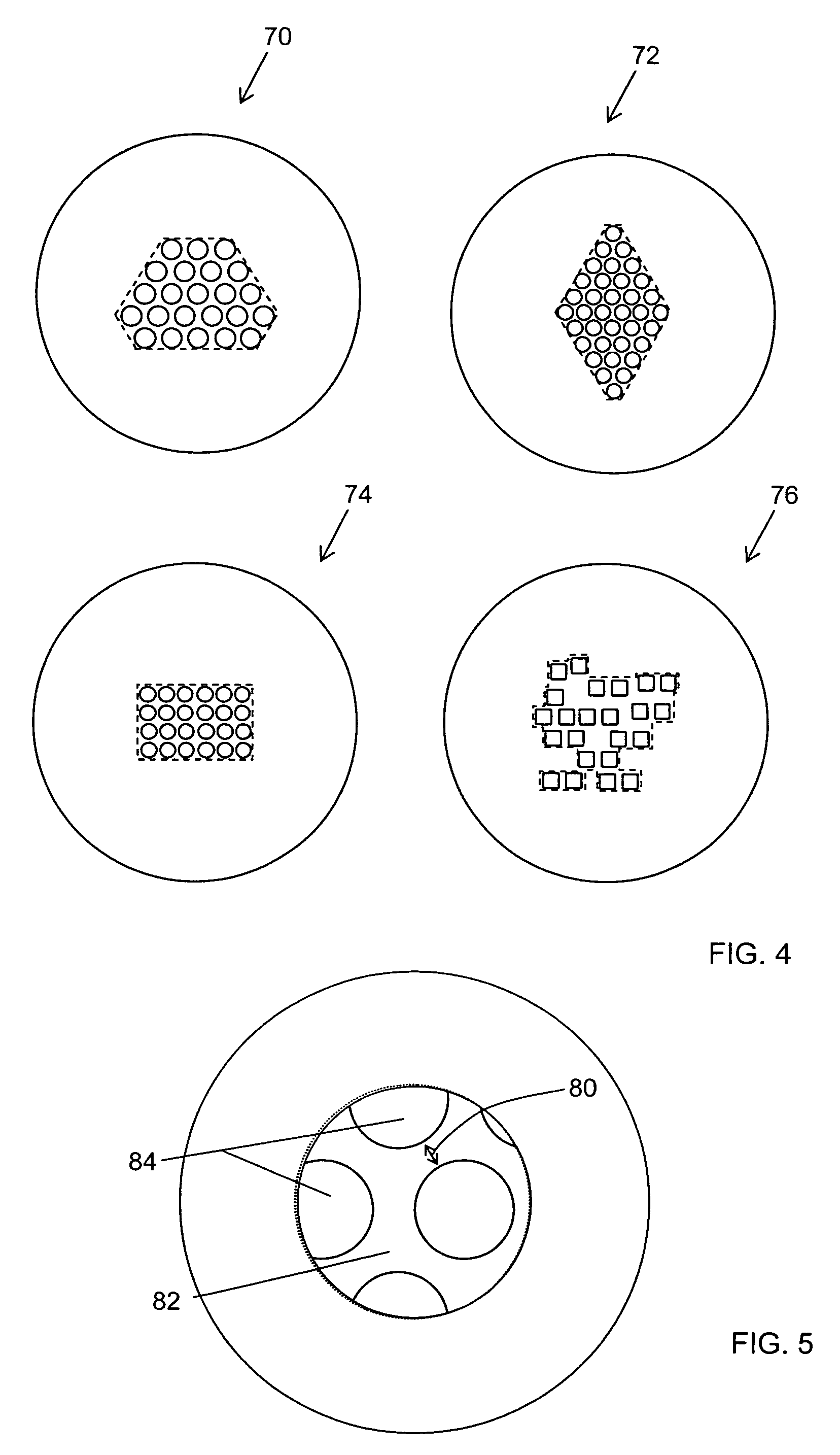Fiber bundles and methods of making fiber bundles
a fiber bundle and bundle technology, applied in the field of fiber bundles and methods of making fiber bundles, can solve the problems of physical fraying of the fiber bundle, affecting the light transmission of the device, so as to achieve the effect of convenient fixture in the devi
- Summary
- Abstract
- Description
- Claims
- Application Information
AI Technical Summary
Benefits of technology
Problems solved by technology
Method used
Image
Examples
Embodiment Construction
[0032]An example of a fused fiber bundle according to one embodiment of the present invention is shown in schematic side view in FIG. 2, and in end-on schematic view in FIG. 3. Fused fiber bundle 40 has a terminal section 42, ending with an endface 44. Fused fiber bundle 40 includes a plurality of optical fibers 46, each of which has a terminal segment 48 ending with a proximal end 50, and a distal end 52. Fused fiber bundle 40 also includes a cellular holding structure 54, which includes a cellular web portion 56 and a tube portion 58 surrounding the cellular web portion 56. The cellular web portion 56 is formed from a web material 60, and includes a plurality of longitudinal cells 62 arranged substantially in parallel, each surrounded by the web material 60. The terminal segments 48 of optical fibers 46 are arranged substantially in parallel, and each terminal segment 48 is disposed in a longitudinal cell 62 of the cellular holding structure 54. The terminal segments 48 of optical...
PUM
| Property | Measurement | Unit |
|---|---|---|
| thickness | aaaaa | aaaaa |
| softening point | aaaaa | aaaaa |
| cross-sectional area | aaaaa | aaaaa |
Abstract
Description
Claims
Application Information
 Login to View More
Login to View More - R&D
- Intellectual Property
- Life Sciences
- Materials
- Tech Scout
- Unparalleled Data Quality
- Higher Quality Content
- 60% Fewer Hallucinations
Browse by: Latest US Patents, China's latest patents, Technical Efficacy Thesaurus, Application Domain, Technology Topic, Popular Technical Reports.
© 2025 PatSnap. All rights reserved.Legal|Privacy policy|Modern Slavery Act Transparency Statement|Sitemap|About US| Contact US: help@patsnap.com



